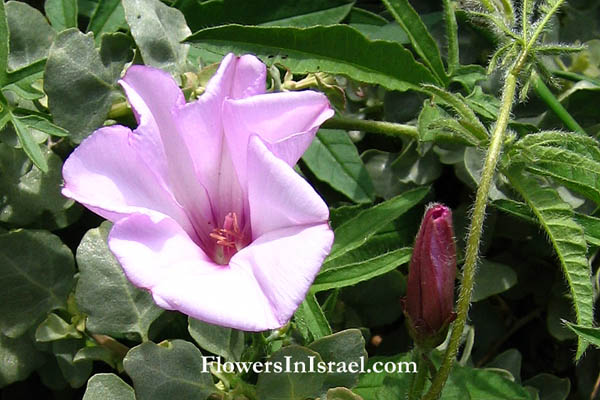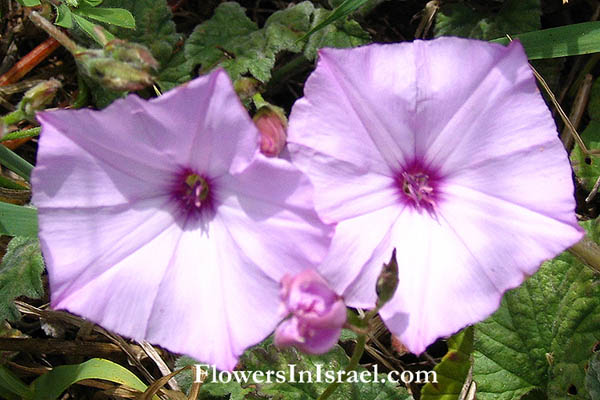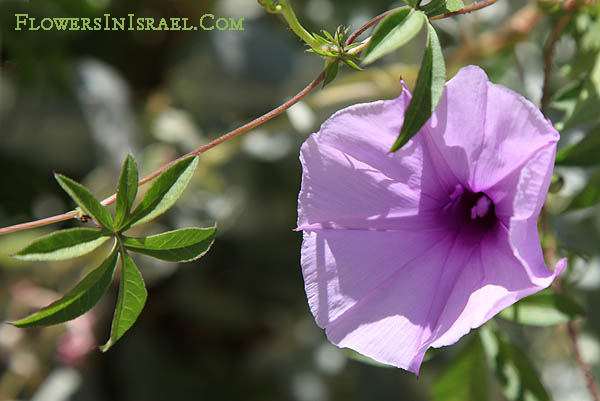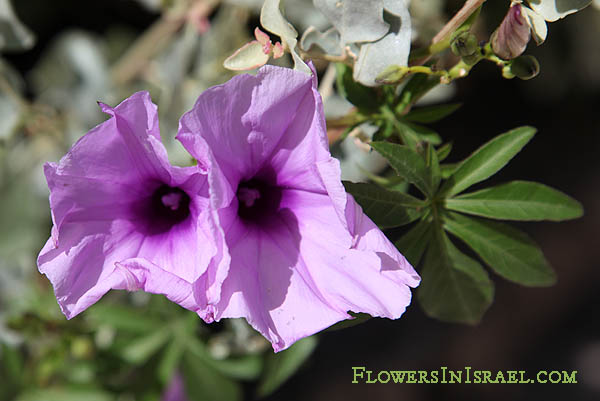Cairo- or coast morning glory, Palmate Morning Glory,
Hebrew: לפופית כפנית, Arabic: شب النهار
| Scientific name: | Ipomoea cairica (L.) Sweet | |
| Scientific name: | Ipomoea palmata Forssk. | |
| Common name: | Cairo- or coast morning glory, Palmate Morning Glory | |
| Hebrew name: | לפופית כפנית | |
| Arabic name: | شب النهار | |
| Family: | Convolvulaceae, חבלבליים |

|
| Life form: | Hemicryptophyte | |
| Stems: | Twining, trailing; hairless | |
| Leaves: | Alternate, compound, pinnate | |
| Inflorescence: | Axillary, 1–3 flowered | |
| Flowers: | Violet funnel-shaped joined petals 3.5–6 cm long, 6–8 cm wide, with darker violet hairless mid-petal bands, throat usually darker | |
| Fruits / pods: | Capsule almost globe-shaped, 9–12 mm wide; seeds dark brown-black, 5–6 mm long, flattened ovoid, hairy with pale brown long hairs on outer ridges | |
| Flowering Period: | Summer | |
| Habitat: | Disturbed habitats | |
| Distribution: | Mediterranean Woodlands and Shrublands | |
| Chorotype: | Tropical | |
| Summer shedding: | Perennating |

Derivation of the botanical name: Ipomoea, Greek ips, a worm, bind-weed; homoios, similar to; referring to the twining habit of the plant's growth. cairica, from Cairo, Egypt. palmata, lobed like a hand; palmate. The Hebrew name: לפופית, lefufit, formed from לפוף, lefuf (=wrapping, binding) with suffix -it.

Location, Jaffa, Gan Hapisga, Summit Garden 
Location, Jaffa, Gan Hapisga, Summit Garden |